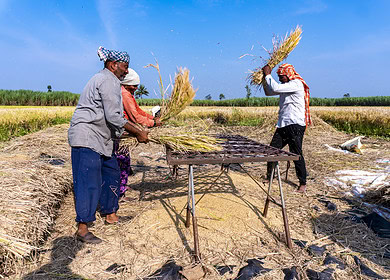Pakistan’s Fertilizer Industry: A Key to Agricultural Growth and Green Initiative

Amidst the top five major urea consumers, which include China, Brazil, USA, and India, Pakistan stands alone in not investing in capacity growth for the next five years. This comes at a time when the nation grapples with a burgeoning population. Experts believe that a thriving domestic fertilizer industry could serve as a significant ally for the Pakistani Government in their Green Initiative, targeting enhanced food security and boosted agricultural exports.
Brig Sher Shah, Executive Director of the Fertilizer Manufacturers of Pakistan Advisory Council (FMPAC), stressed the imperative of fortifying the indigenous fertilizer manufacturing industry to ensure persistent economic advancement and the achievement of the Green Initiative Pakistan’s objectives. “With stagnating fertilizer production, the country is compelled to allocate an increasing portion of its foreign reserves for urea imports,” Shah noted. He further emphasized the necessity of securing sustainable gas supplies for this sector and resolving other lingering challenges, hinting at the potential for exporting excess production to earn foreign exchange.
Shah lauded the Fertilizer Policy 2001 for its success in drawing approximately PKR 162 billion (US$531 million) towards new plants and facilitating a capacity increase of close to 2 million tons by manufacturers. Moreover, this policy’s incentivized gas pricing was entirely extended to farmers, allowing them to purchase urea at rates substantially lower than global prices.
Brig Sher Shah also acknowledged and supported the government’s commitment to cracking down on the illicit hoarding and black marketing of urea, which inflate market prices for farmers and falsely indicate that fertilizer manufacturers are reaping excessive profits. “The earnings of the industry are on par with other significant sectors, and the industry has consistently protected farmers from soaring international urea prices, thus fortifying the nation’s food security,” he stated.
Emphasizing the recent enhancements in farm economics, Shah mentioned that the upgrade in crop support prices and the availability of cost-effective domestically produced urea have significantly benefited farmers. Current data indicates that farmers can now exchange one urea bag for approximately 30kg of wheat, a marked improvement from previous rates. Contrary to common beliefs regarding urea accounting for a sizable chunk of farming expenses, it only represents 7% of the per-acre wheat production cost. Additionally, surveys suggest urea costs comprise a mere 3% of a farmer’s total household expenditure.
Source: LeadPakistan
Enjoyed this story?
Every Monday, our subscribers get their hands on a digest of the most trending agriculture news. You can join them too!
















Discussion0 comments